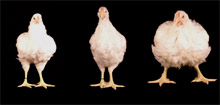A group of scientists at the Massachusetts Institute of Technology has managed to turn fibroblasts, cells abundant in connective tissues, back into pluripotent, i.e. non-differentiated, stem cells. 1Â This has caused quite a stir — and for good reason.
Because stem cells are pluripotent, they can in theory be turned into virtually any cell type in the body. Needless to say, such cells have tremendous potential for therapeutic intervention in all sorts of human maladies that result from cellular death or injury. Until now there have been mainly two ways to obtain stem cells: one involves the generation and subsequent destruction of an embryo to extract embryonic (ES) stem cells, the other relies on isolation of adult stem cells, which have been found in all sorts of locations from the spinal chord to dental pulp.
But there are limitations and issues with both approaches: the derivation of ES cells evokes moral objections from many quarters because it necessitates the destruction of an embryo, while the use of adult stem cells is at present fraught with doubts about whether such cells are truly pluripotent. This is why this new development is considered such a breakthrough.
Why would a method to generate stem cells be relevant for saving endangered animal breeds? What if it were possible to turn pluripotent stem cells into eggs and sperm cells? Impossible, you say? Well, consider this: an article appeared in 2003 in the journal Science claiming that scientists had, indeed, managed to generate what seemed to look like egg cells from embryonic mouse stem cells. 2 Several other groups meanwhile seem to have coaxed stem cells to turn into primitive sperm cells, and at least one report has described the use of such sperm cells to generate live mouse offspring. 3
Much of this remains to be worked out and confirmed by other scientists, and given the incredibly complicated process of meiosis and maturation that egg and sperm cells have to undergo before becoming truly functional, many doubt this kind of approach will ever be feasible. Even the conversion of fibroblasts into stem cells is at present still very complicated and this recent report represents mostly a proof of principle.Â
But just imagine if this were all to work: it might then be possible to go out into a field, pick a few small chunks of ear tissue from as many endangered cattle, goats or pigs as you want,  isolate the fibroblasts, turn them into stem cells, coax those into becoming eggs and sperm, make embryos, and put them into your freezer, where they could remain indefinitely. You could do this probably with a lot less effort than it often takes to ensure preservation of rare animals in situ and would, moreover, be able to bank as much of a breed’s genomic variation as you’d like.
Maybe this will remain science fiction. Then again, nobody thought a sheep could be cloned either…. 4
 Those chickens give me the willies. Like the mythical
Those chickens give me the willies. Like the mythical